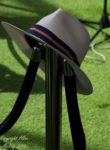 There’s no other way of saying this; 2020 has been an awful year and it’s been hard to take any kind of consolation from it. Anyone in the world of music has had to look long and hard to take any positives out of this situation. For many of us, it’s been an opportunity (or maybe a necessity) to look in the rear-view at some of the things we did in the past; gigs that we went to, albums that we bought and people that we met. I’ve moved around the country a fair amount and, in the era before media players and streaming, I had to limit the music I could move around with me. I’m not saying I was limited to five albums or, later, CDs, but these are albums that always made the cut and they’ve still had the same comfort blanket value through two lockdowns. In chronological order:
There’s no other way of saying this; 2020 has been an awful year and it’s been hard to take any kind of consolation from it. Anyone in the world of music has had to look long and hard to take any positives out of this situation. For many of us, it’s been an opportunity (or maybe a necessity) to look in the rear-view at some of the things we did in the past; gigs that we went to, albums that we bought and people that we met. I’ve moved around the country a fair amount and, in the era before media players and streaming, I had to limit the music I could move around with me. I’m not saying I was limited to five albums or, later, CDs, but these are albums that always made the cut and they’ve still had the same comfort blanket value through two lockdowns. In chronological order:
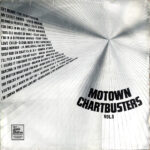 “Motown Chartbusters Vol. 3” – Various Artists
“Motown Chartbusters Vol. 3” – Various Artists
I know; it’s a compilation, but what a compilation. This was the soundtrack of my teenage years; every youth club disco, every party, every time I went to a friend’s house, this album was there. It was perfect timing, with a 1969 release just at the time that I really started to listen to music properly and had a few quid from my paper round to actually buy records.
The Chartbusters series started in 1967; if you’re a cynic, you might accuse Motown of trying to recycle material but it is the music business and it’s fair to say that this series was packed with hits. It was basically a singles industry at that time, so a compilation from a successful company made a lot of sense. So why Vol. 3? Well, the sleeve design evolved as the series progressed, reflecting current social themes, but Vol. 3 was the one where the designers nailed it; it’s simple, bold and incredibly striking and the musical content lived up to the standard of the design.
If a sixteen-song album starts with Marvin Gaye’s “Grapevine” and ends with Smokey’s “Tracks of my Tears”, there’s a lot of wiggle room for the other fourteen songs. Throw in a couple of Stevie Wonder classics, The Temptations’ “Get Ready” and Edwin Starr’s “Stop Her on Sight” and you’ve already got a classic compilation. Take a look at the entire album and it’s studded with classics and minor classics. That’s why it will always have a place in my elite albums.
I bought this the week it was released in September 1977 and took it with me to Dundee for my second year at University. I was in a shared room, but it was with Kev, my room-mate from my first year. We both played guitar and had some musical tastes in common; thankfully Steely Dan was one of those shared tastes. “Aja” was played a lot and we may have smoked some recreational substances, which may have enhanced the listening experience. In my final two years, I had my own room and, again, “Aja” didn’t stay in its sleeve very long. It was starting to look a little worse for wear. You can read the next part of this story in this piece; I don’t want to do it in detail again here. Let’s just say it burned “Aja” into my consciousness and since that time the album’s been a constant companion.
I’d been a Dan fan since the early days and, by this time, I knew to expect the unexpected but this album was something else. They had seven beautifully-constructed and slightly sleazy songs (ok, maybe more than slightly sleazy) and spent studio time with the best session musicians in the world putting together versions of the songs, picking out the seven favourites for the album. They started as jazzers playing rock and with “Aja” they arrived at jazzers playing jazz or maybe jazz-funk; going back to their roots. Like all of the albums mentioned here, this should be in everyone’s collection. It was certainly in the collection of the next band.
I’m Scottish; I’m proud to be a Scot and I used to love the times when the music industry radar periodically located Scotland on the UK map. The mid-to-late eighties was one of those periods; Deacon Blue were one of the bands to be signed and they’re still recording and gigging today. I saw them at Cornbury a couple of years ago and they sounded great with songs covering a period of thirty years. The band members mostly have new day jobs now; Ricky Ross is a radio broadcaster and Dougie Vipond is a TV presenter with BBC Scotland, but that’s all irrelevant when the sticks click and the band fires up.
I bought “Raintown” on vinyl originally and I still have that copy now. The title song was a tribute to Glasgow that spliced Blue Nile with Springsteen to create a wide canvas sound that came to define the band. As much as I loved that song, and the anthem “Dignity”, it was “When Will You (Make my Telephone Ring?)” that I connected with. It was a soul song (they even had Jimmy Helms on BVs) and it was over the top and gorgeous. It was part of an album that you needed to listen to from start to finish (turning over the vinyl halfway through), because you wouldn’t want to miss out on the opener “Born In a Storm” or the yuppie tale “Chocolate Girl”.
And you know that the Steely Dan connection is “Deacon Blues” from “Aja”, obviously.
When the Britpop wars broke out, I was missing in action. Why would anyone hitch themselves to bands that were so obviously influenced by sixties pop. Oasis was The Beatles without the subtlety and Blur was an arch Goldsmiths-enabled Kinks tribute band. We had to be better than that and I’d already committed myself to a band that had much more in common with the East Midlands surroundings I knew as a teenager. The band was from Sheffield and the songs reflected life in the North Nottinghamshire/Derbyshire/South Yorkshire area; Blur and Oasis were copying sixties bands while Pulp felt much more like a musical interpretation of Stan Barstow’s short stories.
“His ‘n’ Hers” was the breakthrough album: it wasn’t the album with the anthems that followed it and turned Pulp into an arena and Glastonbury-headlining band. “Different Class” featured “Common People” and “Disco 2000”, both complete bangers and remixed to within an inch of their lives; as much as I loved them, I still identified much more with the characters and the narratives of “Lipgloss”, “Babies”, ”Acrylic Afternoons” and “Do You Remember the First Time?”. This is still my favourite Pulp album and probably my favourite ‘Britpop’ album.
Only a few months after “His ‘n’ Hers” and so different. If Sheffield defined Pulp, then Bristol defined Massive Attack. The first Massive Attack album “Blue Lines” three years earlier was already firmly embedded in my consciousness. “Unfinished Sympathy” was a classic single and Shara Nelson had a perfect voice to front up the songs. Massive Attack wasn’t a prolific band (quality rather than quantity) and by the time “Protection” came along, Shara had moved on, replaced by a mix of singers and rappers including Tracey Thorn, Tricky, Nicolette and Horace Andy. Along with close neighbours Portishead, Massive Attack defined trip-hop, mixing influences from hip-hop and dub, creating a sound that was both ambient and punchy.
The title song has always pushed my buttons; it’s gorgeous. The bass is thunderous (particularly for a slow ballad), while the guitar, keys and vocals are all crystal clear with a shimmering touch of reverb. The mix is full of space and all of the individual elements stand out. And there’s Tracey Thorn’s almost effortless but incredibly powerful vocal. It’s a classic song and it sets the tone for the album; loads of punchy bass and spacy, dubby mixes – trippy even. The kind of music that might accompany a spliff or two. Which takes us back to my second selection.
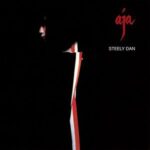 Some albums in your collection, however important they are musically, take on an importance in your life that goes way beyond some sounds coming out of boxes in the corner. Sometimes an album worms its way through your defences to connect up with all sorts of other parts of life and, before you know it, the songs have become inextricably entangled with memories of friends, family and lovers; and there’s no way of untying those knots. “Aja” is one of those albums for me; it has mellow memories of my student years, memories of friends met along the way and tragic memories of one of those friends taken when she had everything before her.
Some albums in your collection, however important they are musically, take on an importance in your life that goes way beyond some sounds coming out of boxes in the corner. Sometimes an album worms its way through your defences to connect up with all sorts of other parts of life and, before you know it, the songs have become inextricably entangled with memories of friends, family and lovers; and there’s no way of untying those knots. “Aja” is one of those albums for me; it has mellow memories of my student years, memories of friends met along the way and tragic memories of one of those friends taken when she had everything before her.
“Aja” was released in October 1977 and the timing was perfect for me. It was the start of my second year at Uni and I’d escaped from halls into a flat where I shared a room with a mate from my first year. We were both musicheads, both played guitar after a fashion and I had a reasonably good stereo. It’s fair to say there was music playing from the moment one of us woke up until the last head (usually mine) hit the pillow. I had a well-paid summer job (which I could tell you a few stories about), so I hit Dundee every October with plenty of readies to support the local record shops.
I was already a bit of a Steely Dan fan, so “Aja” was a no-brainer for me. As I listened to it end-to-end for the first time, I read the lyrics, the list of musicians involved on each track (which I now realise was a guide to the best session guys in the world at that time) and the sleeve notes written by Michael Phalen after spending some fraught and unprofitable time with Becker and Fagen trying to extract some sensible contributions. Typical of their contributions was the description of “Peg” as a ‘pantonal thirteen blues with chorus’; luckily Michael wasn’t a guy to bear a grudge.
It was a strange time for a band like Steely Dan; they were the antithesis of the punk philosophy. I loved the energy of punk/new wave/power pop but I wasn’t willing to take the slash and burn attitude to older music (it cost me a fortune to buy this stuff, no bloody way was I just ditching it). The album took an age to make, the playing was exquisite and there were only seven tracks, none of them less than four minutes long. Just compare that to a Ramones album with fourteen songs, none much more than two minutes long (and I loved The Ramones as well), but “Aja” was about pure musical class, cryptic and coded lyrics with a seedy undertone and some outrageously good solo playing. I didn’t realise at the time that I’d bought a jazz album.
And talking of jazz, that was exactly the kind of cigarettes that accompanied listening to “Aja” for my university years; it was the perfect match, mostly laid-back arrangements, lots of space and perfect to chill out to. It was one of half a dozen albums that always found their way to the deck over the next three years, however many new albums I bought. I wasn’t even choosy about picking favourites; there are seven tracks, “Black Cow”, “Aja”, “Deacon Blues”, “Peg”, “Home at Last”, “I Got the News” and “Josie” and they’re all stunningly good. I would happily listen to any of those songs at any time. But the university idyll couldn’t last forever and I settled back in with my family for a while after graduation. It was the beginning of the Thatcher era and I was living in Mansfield; it was obviously going to be grim, or so I thought.
I settled into a temporary job and listened to a lot of depressing post-punk until something very strange happened. On the regular Friday night out, a mate suggested a visit to The Red Lion, a fun pub (think sleazy, cheesy and very camp) that had just taken off. I was hooked, and after the second visit I landed a weekend bar job there. If the memoirs ever come together, there’s a chapter there that might need very careful legal scrutiny. And that’s where I met Gill (beautiful with a razor-sharp wit) and her friend Denise, both nurses doing part-time bar work. Within a few weeks, we’d all decided to share a house together on Woodhouse Road with another friend, Andy, and I was living a student life again.
I brought one important thing to the party; my record collection. Within a few days, Gill had discovered “Aja” and I realised I would never really own the album again. As much as I loved you Gill, I have to say you absolutely trashed that album; fingerprints all over the first track on each side, and the album never, ever went back in its sleeve. Did it matter? No it didn’t, because she loved the album with such a passion I couldn’t get angry about it. It wasn’t unusual to walk in and find Gill in her underwear ironing that night’s outfit while listening to “Aja” (we always popped a head round the living room door before inviting guests in). We were great mates anyway, but this album was something that created an everlasting bond. While we shared that house, we both formed the relationships that defined our lives (and a few that didn’t); and “Aja” was always there in the background.
Life moved on, the way it does in your early twenties when you think you’ll live forever, and we all left the house to move in with our various partners but kept in touch, directly or on the grapevine as we moved in our chosen directions. Gill started a successful business, fell in love with a nice guy and they had three beautiful daughters. I drifted through nightclub and pub management, the dole queue and self-employment and finally, in 1992, landed a job in entertainments for the armed forces. It was great news and I was all ready to make a new start on a residential training course. Everything was good; and then the doorbell rang.
Denise was on the doorstep, in tears. Gill wasn’t with us any more; she’d had a massive brain haemorrhage a few days before while out shopping and her life support had just been switched off. It wasn’t the first time I’d had to deal with a sudden death (from the other side of the doorstep), but this was someone I’d lived with, and loved, and I thought would always be a part of my life. She had a loving husband and three daughters under five and she had gone, forever. Because of the new job two hundred miles away, I couldn’t get to the funeral (an older me would say ‘Fuck the new job’), so I had to be represented. I still miss Gill to this day; she was the kind of person that took up a huge space in your life and there was a huge hole when she left.
And what was left? Well, I still love “Aja”, and every time I listen to the album, particularly the vinyl version that still has all of the marks and noises left by Gill, I remember that beautiful person ironing in her bra and knickers and singing along to “Peg” at the top of her voice.
And there’s a postscript to this story. On October 30th 2017, I finally got to see Steely Dan live on a double bill with The Doobie Brothers at the 02. The band, as you would expect, was absolutely superb, but the atmosphere was slightly muted because of the death, less than two months before, of Walter Becker. A few gallons of silent tears were shed that night, but mine didn’t really have anything to do with mourning Walter Becker.


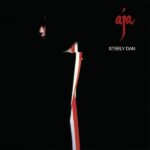 “Aja” – Steely Dan
“Aja” – Steely Dan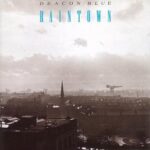 “Raintown” – Deacon Blue
“Raintown” – Deacon Blue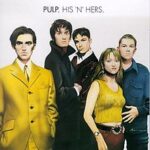 “His ‘n’ Hers” – Pulp
“His ‘n’ Hers” – Pulp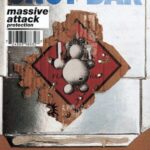 “Protection” – Massive Attack
“Protection” – Massive Attack